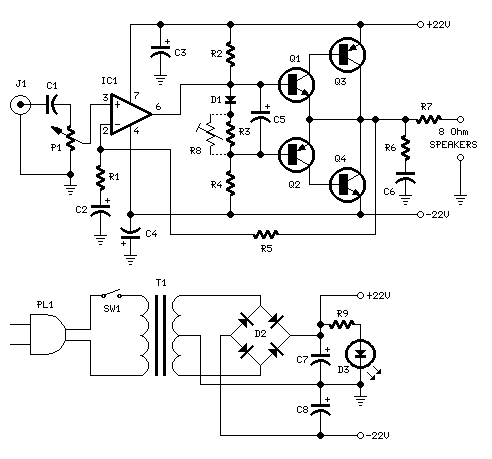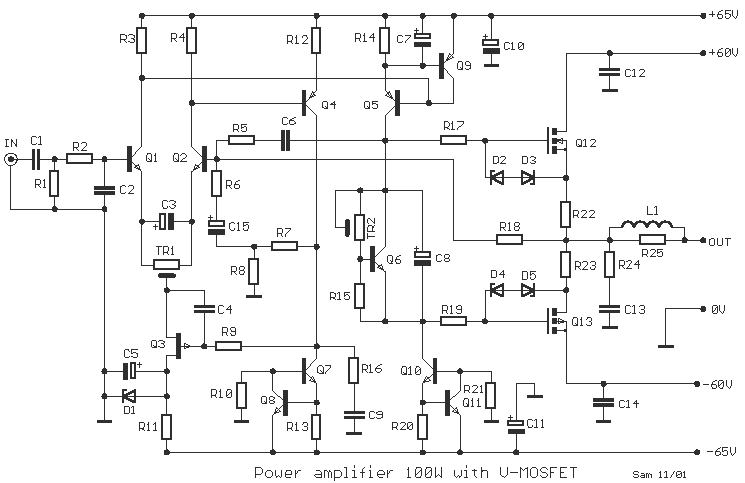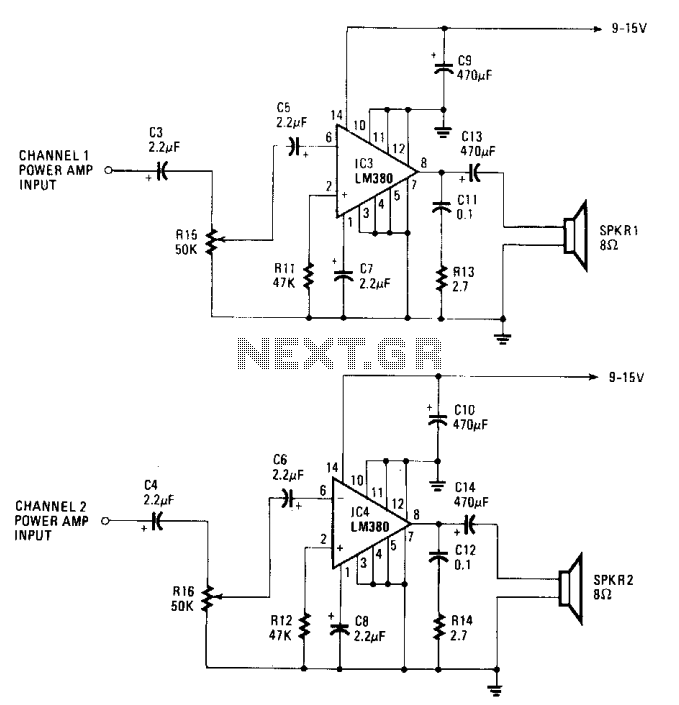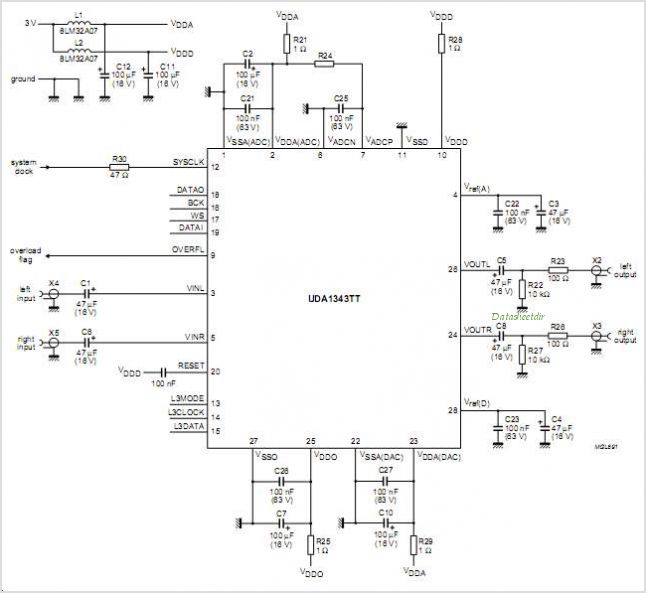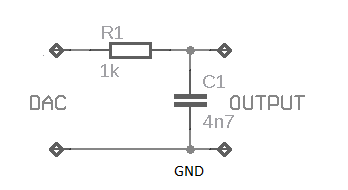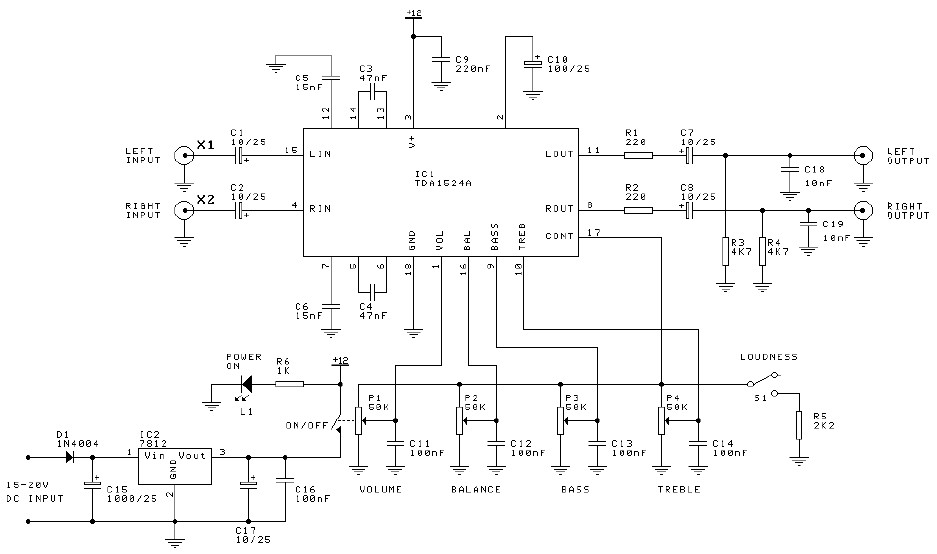
470 Mw complementary-symmetry audio amplifier
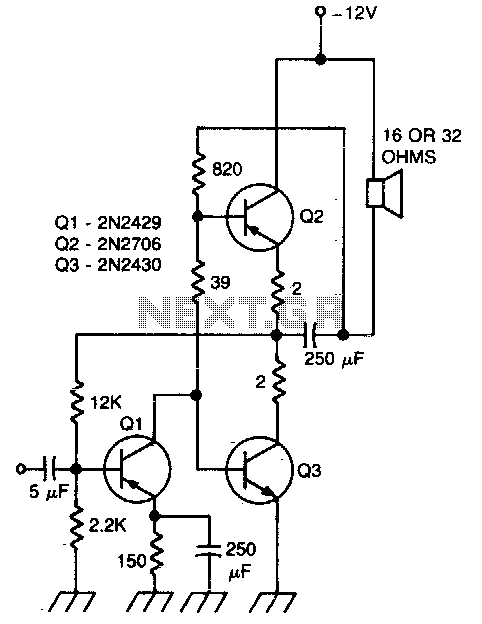
This circuit exhibits less than 2% distortion and maintains a flat response within 3 dB from 15 Hz to 130 kHz.
The described circuit is engineered to provide high fidelity audio performance, characterized by minimal distortion and a wide frequency response. The distortion level, being less than 2%, indicates that the circuit is capable of accurately reproducing audio signals without introducing significant artifacts, which is crucial for high-quality audio applications.
The frequency response range of 15 Hz to 130 kHz signifies that the circuit can effectively handle both low and high-frequency signals. The lower limit of 15 Hz ensures that deep bass sounds are reproduced accurately, while the upper limit of 130 kHz allows for the reproduction of high-frequency sounds that can enhance the overall audio experience, including the nuances in music and sound effects.
In practical applications, such a circuit can be utilized in various audio equipment, including amplifiers, mixers, and equalizers. The flat response within 3 dB across the specified frequency range suggests that the circuit does not favor any particular frequency, thereby ensuring a balanced output. This is particularly important in professional audio settings where accurate sound reproduction is essential for mixing and mastering audio tracks.
To achieve these performance metrics, the circuit may incorporate high-quality components such as precision resistors, capacitors, and operational amplifiers, along with careful layout design to minimize noise and interference. Additionally, feedback mechanisms may be employed to stabilize the gain and further reduce distortion. Overall, this circuit design is well-suited for audiophiles and professionals seeking high-performance audio solutions.This circuit has less than 2% distortion and i&flat within 3 dB from 15 Hz to 130 kHz. 🔗 External reference
The described circuit is engineered to provide high fidelity audio performance, characterized by minimal distortion and a wide frequency response. The distortion level, being less than 2%, indicates that the circuit is capable of accurately reproducing audio signals without introducing significant artifacts, which is crucial for high-quality audio applications.
The frequency response range of 15 Hz to 130 kHz signifies that the circuit can effectively handle both low and high-frequency signals. The lower limit of 15 Hz ensures that deep bass sounds are reproduced accurately, while the upper limit of 130 kHz allows for the reproduction of high-frequency sounds that can enhance the overall audio experience, including the nuances in music and sound effects.
In practical applications, such a circuit can be utilized in various audio equipment, including amplifiers, mixers, and equalizers. The flat response within 3 dB across the specified frequency range suggests that the circuit does not favor any particular frequency, thereby ensuring a balanced output. This is particularly important in professional audio settings where accurate sound reproduction is essential for mixing and mastering audio tracks.
To achieve these performance metrics, the circuit may incorporate high-quality components such as precision resistors, capacitors, and operational amplifiers, along with careful layout design to minimize noise and interference. Additionally, feedback mechanisms may be employed to stabilize the gain and further reduce distortion. Overall, this circuit design is well-suited for audiophiles and professionals seeking high-performance audio solutions.This circuit has less than 2% distortion and i&flat within 3 dB from 15 Hz to 130 kHz. 🔗 External reference
Warning: include(partials/cookie-banner.php): Failed to open stream: Permission denied in /var/www/html/nextgr/view-circuit.php on line 713
Warning: include(): Failed opening 'partials/cookie-banner.php' for inclusion (include_path='.:/usr/share/php') in /var/www/html/nextgr/view-circuit.php on line 713
